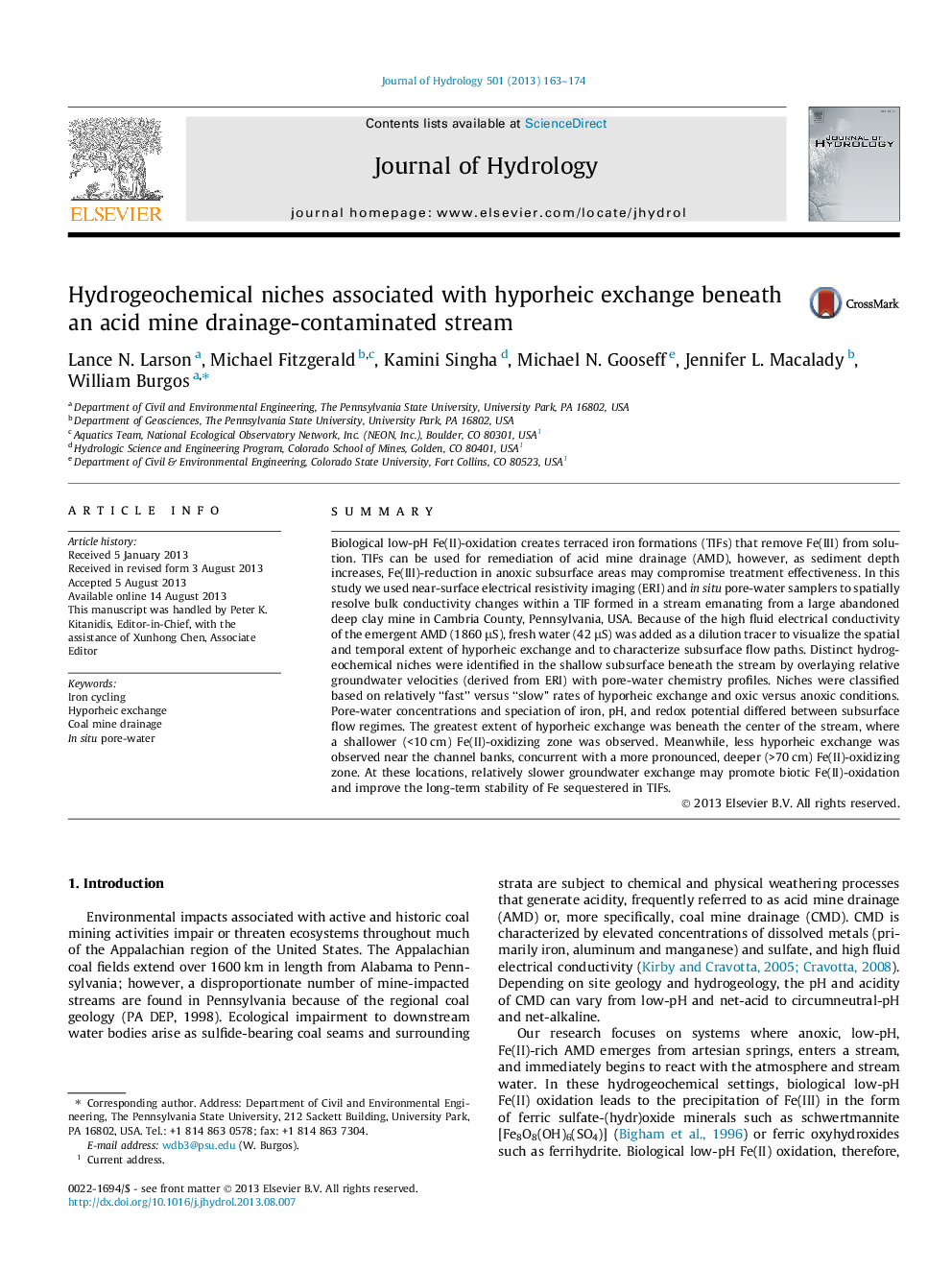| کد مقاله | کد نشریه | سال انتشار | مقاله انگلیسی | نسخه تمام متن |
|---|---|---|---|---|
| 6413528 | 1629947 | 2013 | 12 صفحه PDF | دانلود رایگان |
- We imaged hyporheic exchange using electrical resistivity and a dilution tracer.
- We delineated subsurface regions of fast and slow rates of hyporheic exchange.
- Pore-water geochemical gradients were controlled by extent of hyporheic exchange.
SummaryBiological low-pH Fe(II)-oxidation creates terraced iron formations (TIFs) that remove Fe(III) from solution. TIFs can be used for remediation of acid mine drainage (AMD), however, as sediment depth increases, Fe(III)-reduction in anoxic subsurface areas may compromise treatment effectiveness. In this study we used near-surface electrical resistivity imaging (ERI) and in situ pore-water samplers to spatially resolve bulk conductivity changes within a TIF formed in a stream emanating from a large abandoned deep clay mine in Cambria County, Pennsylvania, USA. Because of the high fluid electrical conductivity of the emergent AMD (1860 μS), fresh water (42 μS) was added as a dilution tracer to visualize the spatial and temporal extent of hyporheic exchange and to characterize subsurface flow paths. Distinct hydrogeochemical niches were identified in the shallow subsurface beneath the stream by overlaying relative groundwater velocities (derived from ERI) with pore-water chemistry profiles. Niches were classified based on relatively “fast” versus “slow” rates of hyporheic exchange and oxic versus anoxic conditions. Pore-water concentrations and speciation of iron, pH, and redox potential differed between subsurface flow regimes. The greatest extent of hyporheic exchange was beneath the center of the stream, where a shallower (<10 cm) Fe(II)-oxidizing zone was observed. Meanwhile, less hyporheic exchange was observed near the channel banks, concurrent with a more pronounced, deeper (>70 cm) Fe(II)-oxidizing zone. At these locations, relatively slower groundwater exchange may promote biotic Fe(II)-oxidation and improve the long-term stability of Fe sequestered in TIFs.
Journal: Journal of Hydrology - Volume 501, 25 September 2013, Pages 163-174
